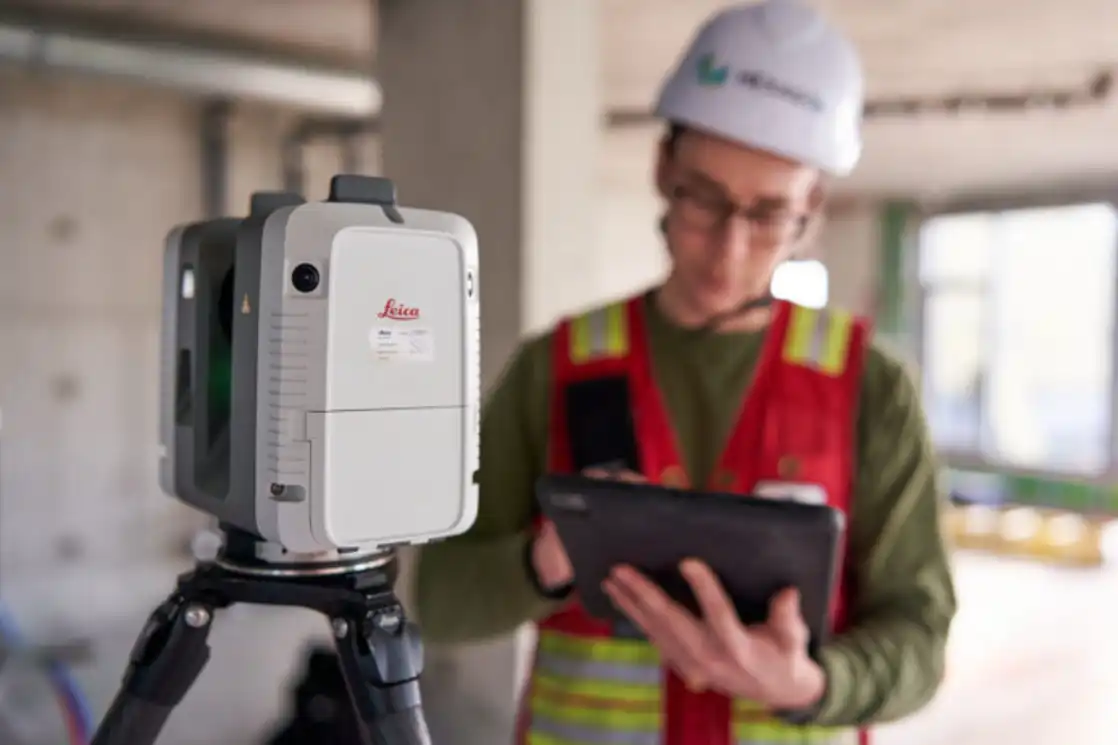

Adaptive reuse is the future of real estate development. As sustainability, urban regeneration, and cultural preservation gain momentum, stakeholders in the construction and real estate industries are turning to innovative technologies like 3D laser scanning to breathe new life into old structures. At FirstLook Services, we specialize in providing cutting-edge solutions to help developers, architects, and contractors unlock the potential of adaptive reuse projects with unparalleled precision and efficiency.
Understanding Adaptive Reuse in Real Estate
Adaptive reuse involves repurposing existing buildings for new uses, preserving their core structure while making them functional for modern needs. From office-to-apartment conversions to transforming old factories into vibrant community spaces, adaptive reuse is reshaping urban landscapes. With estimates suggesting 90% of development projects in the next decade will involve adaptive reuse, the demand for precise, reliable building assessments is skyrocketing.
The Role of Technology in Adaptive Reuse
In the past, adaptive reuse projects relied on manual measurements, incomplete records, and extensive guesswork. Today, technologies like 3D laser scanning empower teams to approach these projects with data-backed confidence. The precision and speed of modern tools allow for thorough evaluations of a building’s condition, reducing errors and delays.
What Is 3D Laser Scanning?
3D laser scanning uses advanced sensors to capture millions of data points, creating a detailed digital representation of a building’s physical structure. This “point cloud” data serves as the foundation for creating BIM (Building Information Modeling) renderings and conducting structural analyses. Think of it as an MRI for buildings, revealing hidden details that can make or break a project.
Benefits of 3D Laser Scanning for Adaptive Reuse
Enhanced Precision
3D laser scanning captures measurements down to the millimeter, ensuring accuracy in planning and execution.
Faster Project Timelines
Detailed scans streamline project phases, from design to construction, cutting timelines significantly.
Cost-Saving Advantages
By detecting potential clashes early, 3D laser scanning minimizes expensive change orders and delays.
Successful Adaptive Reuse Projects
Office-to-Apartment Conversions
One report highlights over 58,000 apartments converted from offices in a single year, demonstrating the scale and potential of adaptive reuse.
Historical Preservation and Revitalization
Preserving culturally significant buildings requires precise assessments, which 3D laser scanning excels at providing.
FirstLook Services: Redefining Adaptive Reuse with 3D Laser Scanning
At FirstLook Services, we pride ourselves on delivering the best in construction imaging and 3D laser scanning. Our expertise helps clients evaluate building suitability, identify reuse opportunities, and plan projects with confidence. By leveraging state-of-the-art tools and processes, we ensure every project meets the highest standards of accuracy and efficiency.
Precision and Certainty in Building Analysis
Using 3D laser scanning, we assess a structure’s foundation, walls, and load-bearing systems to determine its viability for reuse. This level of analysis is invaluable in uncovering hidden opportunities and addressing potential challenges.
Reducing Risks in Construction Planning
Clash detection is a critical feature of 3D laser scanning. By identifying conflicts in design early, teams can avoid costly revisions and maintain project timelines.
3D Laser Scanning as a Sustainability Tool
In today’s circular economy, reducing waste is paramount. Adaptive reuse supported by 3D laser scanning minimizes material usage and promotes environmental responsibility.
The Future of Adaptive Reuse with AI Integration
AI is transforming the construction industry. By integrating AI with 3D laser scanning, FirstLook Services can detect structural anomalies, predict maintenance needs, and provide actionable insights, paving the way for smarter, safer projects.
Overcoming Documentation Challenges in Older Structures
Many older buildings lack comprehensive records. Our 3D laser scanning services bridge this gap, creating accurate digital models to guide project decisions.
Choosing the Right Tools for 3D Laser Scanning
We use best-in-class hardware and software to ensure dense, accurate point clouds. Our team carefully balances cost, speed, and functionality to deliver optimal results for every project.
Real-World Applications of 3D Laser Scanning
From healthcare facilities to urban regeneration projects, the applications of 3D laser scanning are vast. FirstLook Services has a proven track record of success across diverse sectors.
FAQs About 3D Laser Scanning and Adaptive Reuse
- What is point cloud data?
Point cloud data is a collection of precise points captured during 3D laser scanning, creating a detailed digital model of a structure. - Why is adaptive reuse important?
Adaptive reuse preserves resources, reduces waste, and supports sustainable development by repurposing existing structures. - How does laser scanning save costs?
By detecting design clashes early, laser scanning reduces the need for costly change orders and project delays. - Is 3D laser scanning suitable for older buildings?
Yes, it is especially valuable for buildings with incomplete documentation, providing accurate assessments for modern updates. - What tools does FirstLook Services use?
We utilize industry-leading hardware like the Leica RTC360 and advanced software for seamless data processing. - Can laser scanning integrate with BIM?
Absolutely! Point cloud data can be transformed into BIM models, facilitating better planning and collaboration.
Conclusion: The Future of Adaptive Reuse Starts Here
Adaptive reuse is the cornerstone of sustainable development, and 3D laser scanning is the key to its success. At FirstLook Services, we combine cutting-edge technology with unmatched expertise to help clients realize the full potential of their projects. Let us guide your adaptive reuse journey with precision, insight, and innovation.



